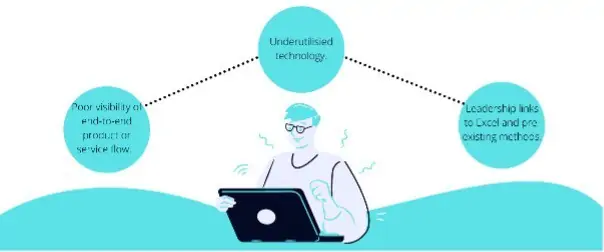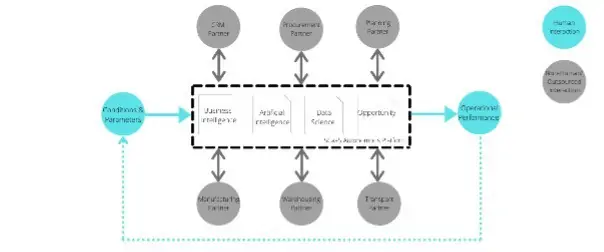The purpose of this article is to introduce an outlook for Supply Chain and my view on the current and future state of Supply Chain Management; aiming to continue growing my network of like-minded professionals.
Upon graduating with a master’s degree in Chemical Engineering in 2017, I started my Supply Chain career planning inventory and managing orders on Excel to fulfil online consumer and retail business demand for a haircare product.
Albeit with dynamic data to analyse and understand, the manual and repetitive nature of many tasks confirmed my interest in roles exploiting technology and automation. As a digital native born at the end of the millennial era, it is fair to say I also expect nothing less.
Supply Chain hereon refers to the end-to-end, multi-functional process of converting demand into revenue and profit through the application of Customer Service, Procurement, Planning, Manufacturing, Warehousing, Transport and so on.
An Inherent Problem (‘As Is’)
Through multi-industry experience, I have been able to observe and experience some of the universal and inherent issues facing Supply Chain Management today outlined below.

Do you ever question your knowledge of what is going on in Supply Chain? Referring to the complete definition provided in the introduction.
Most people in positions expected to know are unlikely to be able to provide a step-by-step walkthrough of product or service flow on request; without first consulting multiple Excel spreadsheets, systems, emails and making a few phone calls to their trusted planning and various operations managers.
There are many causal factors of poor visibility and the exact combination will be organisation specific. To summarise at a high level, available and capable technology is often under-utilised. Cost and delivery take priority in the eyes of Supply Chain leadership. Consequently, becoming digitally enabled does not always get the drive and support needed in favour of tried and tested methods (i.e. Excel).
In addition, generational diversity means that people have different perceptions of digital. For some, digitally enabled means having a well configured ERP product linked to either macro driven spreadsheets or a BI platform at best. For others, it is about the use of artificial intelligence to automate the actions and commands that people have been giving to such applications since the late 20th century. I sit in the latter group whilst supporting diversity.
The overall effect is delayed action and plenty of catching up with a great sense of urgency.
Future State (‘To Be’)
A highly outsourced and autonomous Supply Chain.
Since implementing technology is expensive and success is dependent on business adoption amongst other factors, it is practically impossible to keep up with the latest trends. As a result, those that can benefit from economies of scale by focussing all their effort on one technology platform serving many customers will prevail. This is the rise of what will be known Supply Chain as a Service (SCaaS) – a play on the term Software as a Service (SaaS).
Companies will have the option to avoid capital intensive IT programmes, in favour of consuming tech-powered services at a fraction of the annualised cost. The service provider will continually develop and release new features driven by customer insight in a 100% agile arrangement. Therefore, companies can focus on their primary nature of business being operated efficiently and with peace of mind that they will not fall behind the digital curve.

As visualised above, by having all Supply Chain systems and information flowing through one platform, its value can be enhanced through the application of business intelligence (reports), data science (models) and artificial intelligence (actions). Such platforms will otherwise become known as the brains of the operation. Relative to today, there will be a significant decline in the number of people needed to operate Supply Chains on a manage by exception basis.
So, by when will it happen? Let me know your views.


 EBOOK HERE
EBOOK HERE